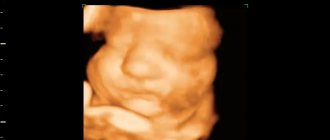Causes
Primary hypogalactia
Primary hypogalactia is a condition that is manifested by a complete lack of milk in a woman who has given birth. It is usually caused by toxicosis in the late stages of pregnancy, bleeding after childbirth, trauma of obstetric origin, and infection of the body. Primary hypogalactia can also be found in mothers who gave birth by cesarean section. It occurs very rarely - only in 5% of women giving birth.
Secondary hypogalactia
With secondary hypogalactia, there is milk, but not enough. Afterwards it either disappears completely or remains in short supply, and the child does not have enough of it.
The causes of secondary hypogalactia may be:
- emotional and physical stress, fatigue;
- cracked nipples or mastitis of the mammary glands;
- woman's illnesses, such as flu or sore throat;
- long periods of time between feeding the baby;
- when feeding, the baby takes in air along with the milk;
- lactation crises, which are a transient reduction in mother's milk. This may last approximately four days;
- other reasons (disturbed diet, too early/late age of the nursing mother), which play a minor role in the development of this problem.
Causes of hypogalactia
The main reasons causing hypogalactia: 1. Weak motivation, reluctance of the woman herself to breastfeed.
If a woman in labor for some reason is not in the mood for lactation, her milk may be produced poorly or disappear altogether. 2. The first breastfeeding happened too late. It is recommended to give the baby breastfeeding in the first half hour after birth, this stimulates lactation.
3. Incorrect breastfeeding regimen, too infrequent latching, based not on the baby’s needs, but on artificially created rules.
4. Excessive fatigue, lack of sleep, stress can affect lactation suppression. Hypogalactia may appear due to the inability to rest or heavy physical exertion in a nursing woman.
5. Problems during childbirth, obstetric injuries, heavy bleeding, excessive stimulation, anesthesia.
6. Taking certain medications: diuretics, camphor, hormonal drugs.
7. Hereditary factor.
8. Chronic and acute diseases.
9. Pathologies of the mammary glands.
Diagnostics
Before you begin treatment for hypogalactia, you need to accept and adhere to several very important conditions:
- You need to keep your child “from hand to mouth.” It sounds strange, but it works. The baby should not receive any food or drink other than breast milk. You need to apply it to your chest at the first call. The process of sucking it provokes a rush of breast milk to the mammary glands;
- There is no need to immediately feed the baby with formula if it is possible to restore the normal lactation process.
A doctor can diagnose hypogalactia after collecting an anamnesis about the patient.
What can a nursing woman eat:
- any kind of porridge. It is recommended to exclude rice porridge if your baby suffers from constipation;
- boiled, stewed, baked meat and fish of low-fat varieties;
- hard cheese, curd cheeses and yoghurts without fruit additives, cottage cheese;
- boiled beets and carrots, grated, seasoned with a small amount of vegetable oil;
- boiled or fried potatoes;
- any pasta without spicy and fatty ketchups, seasonings and mayonnaise;
- poultry, with the exception of broiler chickens;
- minced meat products (cutlets, dumplings, meatballs);
- cottage cheese products (dumplings, cheesecakes);
- pancakes, pancakes;
- eggs 3-4 times a week, it is recommended to eat them as a steam omelet;
- You can buy milk sausage only when you are confident in its high quality;
- nuts, except hazelnuts, which are very often an allergen;
- apples and pears (baked are recommended);
- bananas;
- low-fat milk and dairy products;
- dried fruit compotes, tea with milk, mineral water (still), green tea without sugar, apple and plum juices (with caution);
- salinity (rarely and in small quantities);
- vegetable pancakes made from zucchini or cabbage;
- cookies without fatty or fruit additives.
Dyes, preservatives, allergens, fatty foods, concentrates, hot seasonings and sauces, marinades, carbonated drinks, cucumbers and other vegetables and fruits (cabbage, peas, radishes, grapes) are undesirable, since these products actively contribute to gas formation in the intestines, meat and rich fish broths, creams, cakes, pastries, chocolates, caviar, smoked meats.
Remember also that in pursuit of restoring your previous weight, you should never go on a diet. After all, by excluding this or that product from your diet, you deprive your baby of many useful substances. Do not feed your baby “empty milk”, feed him good, complete and tasty natural nutrition so that he grows up beautiful and healthy.
Remember also that by eating fatty foods, you can increase the fat content of milk not for the better. 11% fat in milk is constant, and you can increase the fat content in such a way that it will only lead to constipation in the baby, because his body is tuned to a certain composition of his mother’s milk, he does not need more fat. Therefore, in order to feed and lose weight, your diet must include a complete protein and carbohydrate dish, and it is recommended to eat less fat, giving preference to vegetable oils. Thus, while breastfeeding, you can actually lose excess weight!
Evgeny Yakovlevich Gatkin Doctor of Medical Sciences, doctor of the highest category
Treatment
If a young mother has a problem such as hypogalactia, treatment is carried out through the use of certain drugs and substances:
- a nicotinic acid. Its dose is selected depending on the desired result. If you use nicotinic acid, the woman should feel warm. If this is not noticed, then the dose should be increased by one and a half times. Nicotinic acid is taken twenty minutes before feeding and two hours after meals. Typically, this remedy is indicated to be taken four times a day;
- vitamins "Gendevit". Take one gram three times a day 30 minutes before meals. You can also take vitamin E with them;
- An effective remedy for the treatment of hypogalactia is a drug based on royal jelly called “Apilak”. It is taken three times a day daily. Usually this remedy is prescribed after the mother has taken a course of nicotinic acid;
- After feeding the baby and expressing milk, a hot shower of the mammary glands may be useful. At this time, it is worth doing a breast massage and expressing the milk that is left. It is better to shower several times a day after feeding;
- It should be taken into account that medications for the treatment of hypogalactia are less effective than physical stimulation of lactation.
Prevention
Prevention of hypogalactia, which the expectant mother should take care of before giving birth, includes the following methods:
- physiological birth. Optimal age – 21–35 years;
- the newborn must be put to the breast early;
- before the lactation period, the baby does not need to be bottle-fed;
- do not feed or supplement the child with water and various formulas;
- You need to put your baby to the breast as often as necessary;
- during childbirth, stimulation and anesthesia should be avoided;
- the mother should be in comfort and not be stressed.
Hypogalactia: prevention and treatment
Pediatrician of the outpatient department of children's clinic No. 6 Olga Viktorovna Popova
Hypogalactia - (from the Greek hypo - low and galaktios - milk) is a condition opposite to hyperlactation, which is characterized by a decrease in the secretory activity of the mammary glands during lactation. Hypogalactia can be primary and secondary, early and late.
Reasons for decreased lactation
True (or primary) hypogalactia occurs in no more than 5% of women. In other cases, a decrease in lactation is caused by various reasons, such as:
- Lack of dominant lactation in a woman. The body reacts to signals from the deep layers of consciousness and gradually stops milk production;
- The use of a large number of medications during childbirth leads to hormonal imbalance in the body. The mother's body becomes unable to properly respond to the needs of the baby suckling;
- Late and incorrect attachment of the baby to the breast (later than 30 minutes after birth);
- Rare and short feedings. In the first days and first month of the baby’s life, breastfeeding should be at least once every 1.5 - 2 hours during the day, at night - at least 3 - 4 times, 2 of which must necessarily occur between 3 and 7 am . (This is necessary for sufficient production of the hormone prolactin, which is responsible for milk production). The duration of sucking should be at least 30 minutes;
- Feeding according to a schedule disrupts the natural rhythms of the mother’s body and does not take into account the needs of the child
- Suggestion from doctors, as well as relatives, that there may not be enough milk. This is greatly facilitated by the practice of control weighings in clinics and the developed norms for a child’s weight gain, which do not take into account significant variations not only in the individual characteristics of children, but also in the amount of milk sucked by the same child at different times;
- Reduced sucking activity of a child in case of illness;
- Use of pacifiers, pacifiers, overlays;
- Unreasonable introduction of human milk substitutes as supplementary feeding. Early introduction of complementary foods leads to satiation of the child and a decrease in sucking time;
- Unfavorable family circumstances, the need to go to work, etc.;
- Taking contraceptives, diuretics by a nursing mother, next pregnancy.
It is unacceptable to give a child supplementary feeding with human milk substitutes only if hypogalactia is suspected, without direct confirmation of this diagnosis. Even giving formula to a newborn once can negatively affect the development of lactation! Only the presence of all the signs of lack of milk in combination allows us to talk about hypogalactia.
Signs of hypogalactia
- Small weight gain of the child (per month);
- Decreased daily breast milk volume;
- Child's anxiety;
- Symptom of “dry diapers”, i.e. decrease in daily urine volume (a child under 6 months should urinate up to 15 times a day);
- The child's stool is scanty and has a dense consistency.
It is necessary to clearly establish how much milk the baby sucks per day - carry out control weighings before and after each feeding (in the same clothes and diaper), and summarize the results.
Prevention and treatment of hypogalactia: feed correctly
It is quite possible to cope with hypogalactia and establish breastfeeding. First of all, you need to follow fairly simple feeding rules:
- Try to feed your baby in a quiet, secluded, calm, comfortable place. External stimuli - TV, bright light, strangers nearby (even if it’s the baby’s dad or close relatives) - all this distracts from communicating with the baby;
- During periods of lack of milk, put the baby to the breast even more often than before, let the baby suck on the breast like a pacifier;
- Carry your baby in your arms as often as possible, rock him with your breast in your mouth. Do not limit the time your baby spends at the breast!;
- The baby should not suck on anything other than the breast - neither a bottle nor a pacifier;
- Under no circumstances should you supplement your child with water or tea. Water provokes digestive problems in infants, increases gas formation and reduces the quality of milk digestibility;
- It is very important that the baby latch onto the breast correctly. Otherwise, he will not be able to suck the portion of milk he needs. The child should open his mouth wide, the lower lip should not curl up, and the baby should grasp not only the nipple, but also the entire nipple circle;
- At night, during periods of low milk supply, co-sleeping is very important. Your warmth and love will help the baby and you cope with a temporary lack of milk;
- It is better to feed your baby naked, pressing him to your skin. You can feed your baby in a warm, comfortable bath. During this period, blood flow in the mammary gland increases, blood vessels dilate, which leads to increased lactation;
- Immediately before feeding, you can drink hot, freshly brewed green tea with milk, any juice, and fermented milk drinks. You can try taking the Laktovit herbal collection.
Stimulate lactation:
- Cumin (pour boiled water over cumin seeds, add peeled and chopped lemon, sugar and cook over low heat for 5-10 minutes, cool, strain. Take ½ cup 2-3 times a day);
- Dill (pour boiling water over dill seeds, leave for 2 hours, strain. Take 1 tablespoon 6 times a day. Drink in small sips, hold in mouth for a while.);
- Tea with oregano, tea with lemon balm - drink tea hot, in small sips before feedings 30 minutes before or even during feedings.
After feeding, wash the breast that was fed with a hot shower (44-45 0C), knead it in a circular motion from the center to the periphery and from top to bottom, and be sure to express the remaining milk under a warm shower. This procedure should be carried out at least 4 times a day for 10 minutes for no more than 2 weeks. Usually milk arrives at the end of the first week.
*When preparing the article, materials from open sources were used
Lactation crisis
In the first year of life, there are periods when the baby may not have enough milk. These are the so-called lactation crises; they occur during periods of the most intensive growth of the child. Lactation crises most often appear at 3 - 6 weeks of life, at 3 - 4 months and at 7 - 8 months of life. The duration of the lactation crisis is approximately 3 - 5 days.
During these periods, you should increase the frequency of breastfeeding. During feeding, place the baby on both breasts. Night feeding is a must. Also, mother should pay attention to herself, normalize her daily routine and nutrition.
Types of hypogalactia
- By etiology: - primary - caused by hormonal changes in a woman (diabetes mellitus); - secondary - associated with somatic diseases, after a difficult birth, mental trauma, as a result of poor nutrition and regimen, due to acute inflammatory processes in the mammary gland.
- By time of occurrence: - early - detected in the first 10 days after birth; - late - detected 10 days after birth.
- According to the degree of milk deficiency: - I degree - milk deficiency no more than 25% of the daily requirement; — II degree — 26-50%; — III degree — 51-75%; — IV degree — more than 75% of the daily requirement.











